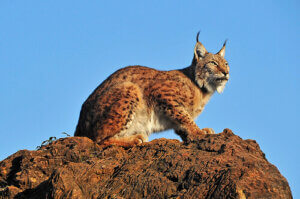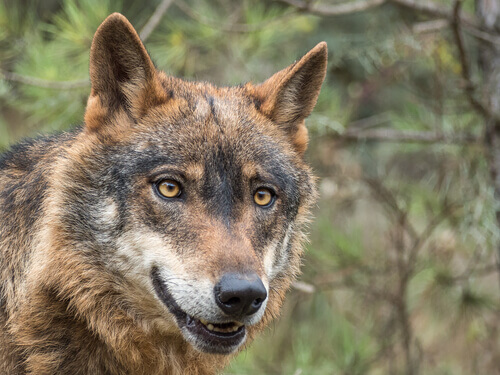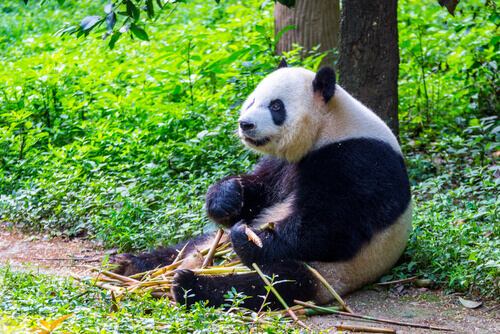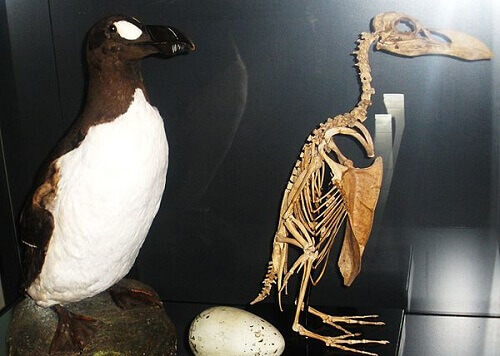What Does it Mean to Be in Danger of Extinction?


Written and verified by the vet Eugenio Fernández Suárez
What does it mean for an animal to be in danger of extinction? Beyond the obvious fact that their wild populations are in danger of disappearing, this issue is much more complicated. When a species is in danger of extinction it’s part one of the categories in which IUCN listed (The International Union for the Conservation) species fall.
The IUCN is the first organization dedicated to the conservation of history and which created the red list. This list classifies species according to their degree of threat of extinction. We’ll discuss them below.
Animals in danger of extinction: least concern
Some species are still going strong and are in the least concern category. Here, you’ll also find human beings. Then threats appear and so do ‘near- threatened’ species. Alarms bells ring and plans are put in place to closely monitor the populations of the species.

The Iberian wolf is a somewhat controversial designation, as many consider this species endangered.
Many species don’t have a specific degree of threat, as we still don’t know their numbers. Unfortunately, most of the species that have been discovered in recent years, whose threat was unknown, tend to move to the most dangerous categories, as is the case with the new orangutan species that has recently been discovered.
Threatened species
All animals in this category have suffered many casualties and their former territory and population sizes have reduced. The vulnerable species category is the least threatened, although the risk of being endangered is high.

Many species once threatened by extinction have made the reverse path, and today they’re vulnerable species, such as the panda bear.
Then, we look at species that are in danger of extinction. These ones are at risk of disappearing from our planet, as is the case with the Iberian lynx. Although many people think that animals in danger of extinction are the most threatened, this isn’t the case. There’s another category before extinction: animals in critical danger of extinction, such as the European mink, threatened by the introduction of the American mink into Europe.
Extinct species
Logically, when we talk about an extinct species, we mean an animal that has disappeared entirely from the planet, such as the Tasmanian tiger or the giant auk.

Some species haven’t disappeared from the planet but they no longer live in natural spaces. For example, those that live in breeding centers or zoos. However, they’re very specific cases, such as the ax-billed turkey or the Hawaiian crow. Animals that don’t live in the wild but still live in captivity are considered to be extinct in the wild.
Unfortunately, most species that are currently changing categories are increasingly approaching close to extinction, rather than moving away from extinction. A group of animals such as primates shows harrowing data: 60% of primates are in danger of extinction and are losing numbers from their populations; species such as gorillas or orangutans are shrinking by the day.
Similarly, amphibians are losing many members. Island dwelling birds aren’t safe either, as they’re one of the most extinct groups in the last century. Will we stop this in time, or will it be too late for the animals we love?
Unfortunately, most species that are currently changing category do so by becoming closer to extinction.
What does it mean for an animal to be in danger of extinction? Beyond the obvious fact that their wild populations are in danger of disappearing, this issue is much more complicated. When a species is in danger of extinction it’s part one of the categories in which IUCN listed (The International Union for the Conservation) species fall.
The IUCN is the first organization dedicated to the conservation of history and which created the red list. This list classifies species according to their degree of threat of extinction. We’ll discuss them below.
Animals in danger of extinction: least concern
Some species are still going strong and are in the least concern category. Here, you’ll also find human beings. Then threats appear and so do ‘near- threatened’ species. Alarms bells ring and plans are put in place to closely monitor the populations of the species.

The Iberian wolf is a somewhat controversial designation, as many consider this species endangered.
Many species don’t have a specific degree of threat, as we still don’t know their numbers. Unfortunately, most of the species that have been discovered in recent years, whose threat was unknown, tend to move to the most dangerous categories, as is the case with the new orangutan species that has recently been discovered.
Threatened species
All animals in this category have suffered many casualties and their former territory and population sizes have reduced. The vulnerable species category is the least threatened, although the risk of being endangered is high.

Many species once threatened by extinction have made the reverse path, and today they’re vulnerable species, such as the panda bear.
Then, we look at species that are in danger of extinction. These ones are at risk of disappearing from our planet, as is the case with the Iberian lynx. Although many people think that animals in danger of extinction are the most threatened, this isn’t the case. There’s another category before extinction: animals in critical danger of extinction, such as the European mink, threatened by the introduction of the American mink into Europe.
Extinct species
Logically, when we talk about an extinct species, we mean an animal that has disappeared entirely from the planet, such as the Tasmanian tiger or the giant auk.

Some species haven’t disappeared from the planet but they no longer live in natural spaces. For example, those that live in breeding centers or zoos. However, they’re very specific cases, such as the ax-billed turkey or the Hawaiian crow. Animals that don’t live in the wild but still live in captivity are considered to be extinct in the wild.
Unfortunately, most species that are currently changing categories are increasingly approaching close to extinction, rather than moving away from extinction. A group of animals such as primates shows harrowing data: 60% of primates are in danger of extinction and are losing numbers from their populations; species such as gorillas or orangutans are shrinking by the day.
Similarly, amphibians are losing many members. Island dwelling birds aren’t safe either, as they’re one of the most extinct groups in the last century. Will we stop this in time, or will it be too late for the animals we love?
Unfortunately, most species that are currently changing category do so by becoming closer to extinction.
This text is provided for informational purposes only and does not replace consultation with a professional. If in doubt, consult your specialist.








